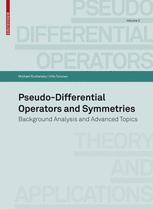

Most ebook files are in PDF format, so you can easily read them using various software such as Foxit Reader or directly on the Google Chrome browser.
Some ebook files are released by publishers in other formats such as .awz, .mobi, .epub, .fb2, etc. You may need to install specific software to read these formats on mobile/PC, such as Calibre.
Please read the tutorial at this link: https://ebookbell.com/faq
We offer FREE conversion to the popular formats you request; however, this may take some time. Therefore, right after payment, please email us, and we will try to provide the service as quickly as possible.
For some exceptional file formats or broken links (if any), please refrain from opening any disputes. Instead, email us first, and we will try to assist within a maximum of 6 hours.
EbookBell Team

0.0
0 reviewsThis monograph is devoted to the development of the theory of pseudo-di?erential n operators on spaces with symmetries. Such spaces are the Euclidean space R ,the n torus T , compact Lie groups and compact homogeneous spaces. The book consists of several parts. One of our aims has been not only to present new results on pseudo-di?erential operators but also to show parallels between di?erent approaches to pseudo-di?erential operators on di?erent spaces. Moreover, we tried to present the material in a self-contained way to make it accessible for readers approaching the material for the ?rst time. However, di?erent spaces on which we develop the theory of pseudo-di?er- tial operators require di?erent backgrounds. Thus, while operators on the - clidean space in Chapter 2 rely on the well-known Euclidean Fourier analysis, pseudo-di?erentialoperatorsonthetorusandmoregeneralLiegroupsinChapters 4 and 10 require certain backgrounds in discrete analysis and in the representation theory of compact Lie groups, which we therefore present in Chapter 3 and in Part III,respectively. Moreover,anyonewhowishestoworkwithpseudo-di?erential- erators on Lie groups will certainly bene?t from a good grasp of certain aspects of representation theory. That is why we present the main elements of this theory in Part III, thus eliminating the necessity for the reader to consult other sources for most of the time. Similarly, the backgrounds for the theory of pseudo-di?erential 3 operators on S and SU(2) developed in Chapter 12 can be found in Chapter 11 presented in a self-contained way suitable for immediate use.